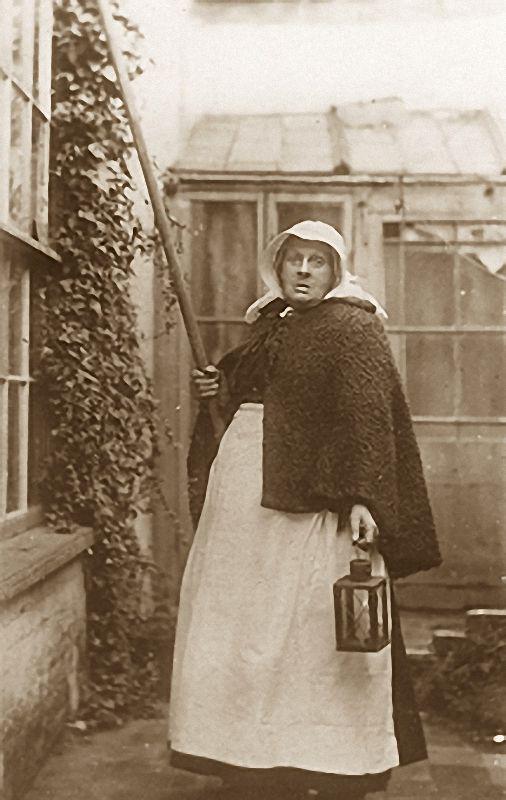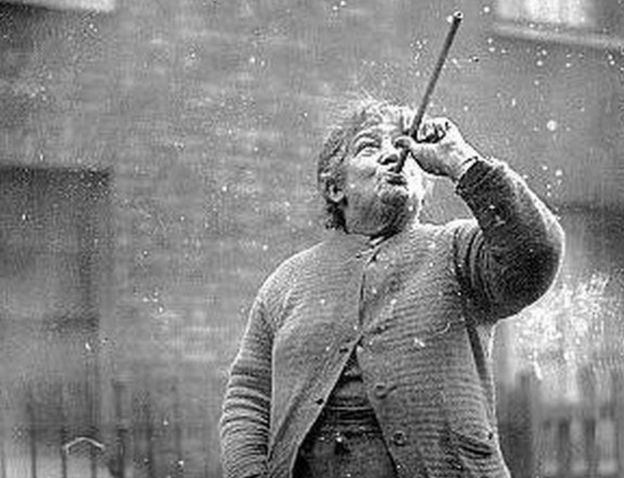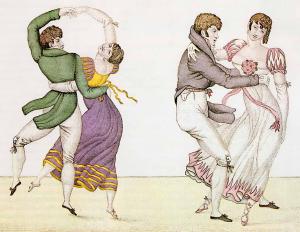 I’m so excited to welcome Deanna Rutledge back to Romancing History today. Deanna is a YA historical fiction author and today she’s going to introduce to William Oliver, the hero of A Far and Distant Cry, Book #1 in the Return to Trowleigh series.
I’m so excited to welcome Deanna Rutledge back to Romancing History today. Deanna is a YA historical fiction author and today she’s going to introduce to William Oliver, the hero of A Far and Distant Cry, Book #1 in the Return to Trowleigh series.
To give you a little background to the story, click here to see the book trailer for A Far and Distant Cry.
Deeana has graciously offered a print copy of A Far and Distant Cry so make sure to ask a question or leave a comment to be entered in the drawing.
Meet William Oliver
I am William Oliver, the only son of Baron Justin Oliver of Trowleigh. The moment the savage Danes took over my ancestral home, Trowleigh Castle, on the orders of Prince John, my life changed forever. My father, one of the most famous knights in the realm, unwittingly insulted John, and the Prince seethed for revenge. Unfortunately, Father went on Crusade in the Holy Land, where he disappeared. But John decided to turn all the vengeance his wicked soul could devise upon me and my sister. Before he left, Father charged me to keep Alix safe, but how can I get her to our rich relatives in Normandy when John’s spies are everywhere, and the prince himself is planning my funeral?
What is your main goal in life?
I strive to be like my father, that most chivalrous of knights, who fought at the right hand of the king. I imagine the two of us, one day, sunlight glinting on our armor, riding side by side on magnificent chargers, to reclaim Trowleigh Castle together. In the meantime, the laws of chivalry require me to fulfill my father’s charge to keep Alix safe. That is not as easy as it sounds, considering that the most powerful man in the kingdom is against us.
What keeps you up at night?
Alix and I knew nothing of the outside world when we ran away and began our adventures, and since then we have been betrayed, robbed, and abandoned. John sent his best and most ruthless soldiers after us, and they seem to turn up everywhere. I don’t know who I can trust to help us.
What is your pet peeve?
Philip Augustus was only 15 when he became king of France. Severus Alexander was crowned Emperor of Rome at 14. And our present king, Richard, commanded his own army when he was only slightly older than I am now. I am of noble lineage, and great things are expected of me. Yet here I am, forced to spend my youth in hiding, knowing that the moment I show my true face, I’ll be clamped in chains, executed, and my sister married off to one of Father’s enemies.
What keeps you going when times get rough?
As a knight in training, I am convinced that good conquers evil. As we encounter one life-threatening situation after another, the Lord is showing both my sister and me that He is just what scripture says He is: our refuge, our deliverer, the Power that saves us. When troubles arise, He is there with us. It seems impossible to think that we will ever return to our ancestral home and continue the secure and happy life we once knew, but with God, all things are possible. That is the hope I cling to.
About the Return to Trowleigh Series
A Far and Distant Cry: England, 1193 A.D. Lady Alix Oliver, 16, and her brother William, 14, flee across hostile country to outrun and outwit Prince John who has vowed to destroy their noble family.
On Rumor’s Deadly Tongue: England, 1193, Lady Alix and William take shelter in Fairfield Priory. Soon, however, vile and dealy rumore turn the priory village into chaos. With soldiers banging on the gates, can they rescue their friends from the howling mob before they are discovered?
There Came a Wounded Knight: England, 1193 A.D. In the town of Sudwell, both Lady Alix and William face perilous life and death challenges. Meanwhile, a wounded Knight on a milk white horse sets a weary course for home. The pulse-pounding conclusion to the Trowleigh adventure series.
Available on Amazon
About the Author
 Award winning author, Deanna Rutledge, was excited to find that her English literature students were captivated by fiction set in the Age of Chivalry and Romance. “We finished Tales of King Arthur and Ivanhoe, and they wanted more,” she said. That inspired her to write the Christian historical series, Return to Trowleigh, set in that same time period. All three books follow young William Oliver and his sister, Lady Alix, as they race across hostile country, fleeing from the prince who seeks to destroy them.
Award winning author, Deanna Rutledge, was excited to find that her English literature students were captivated by fiction set in the Age of Chivalry and Romance. “We finished Tales of King Arthur and Ivanhoe, and they wanted more,” she said. That inspired her to write the Christian historical series, Return to Trowleigh, set in that same time period. All three books follow young William Oliver and his sister, Lady Alix, as they race across hostile country, fleeing from the prince who seeks to destroy them.
When she is not reading or writing, Deanna enjoys singing in the choir led by husband, Bill, playing with her young grandchildren (aka the Two Tornadoes) and raising Gracie, a little Cockapoo, who greets every person she meets with tale-wagging enthusiasm, especially the UPS guy with the noisy truck.
Connect with Deanna by visiting her website or follow her on Facebook or Twitter.
Giveaway*
This giveaway is now closed.
Congratulations to our winner, Caryl K!
Deanna has graciously offered a print copy of A Far and Distant Cry, Book #1 in the Return to Trowleigh series. To enter, leave a comment or question for Deanna.
*Giveaway ends 11:59pm EDT, Wednesday, April 12, 2023





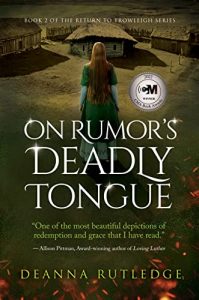
 Sarah Drayton is eager to spend time with her best friend at her crumbling Northumberland castle estate. Matrimony is the last thing on her mind and the last thing she expects to be faced with on a holiday. Yet she finds herself being inveigled into a marriage of convenience with her friend’s rakish brother.
Sarah Drayton is eager to spend time with her best friend at her crumbling Northumberland castle estate. Matrimony is the last thing on her mind and the last thing she expects to be faced with on a holiday. Yet she finds herself being inveigled into a marriage of convenience with her friend’s rakish brother. Carolyn Miller is an inspirational romance author who lives in the beautiful Southern Highlands of New South Wales, Australia, with her husband and four children.
Carolyn Miller is an inspirational romance author who lives in the beautiful Southern Highlands of New South Wales, Australia, with her husband and four children.
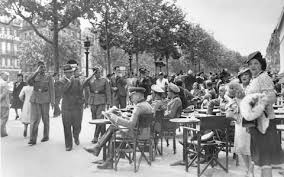
 A prostitute, a spy, and the liberation of Paris.
A prostitute, a spy, and the liberation of Paris.

 Austen didn’t put her name on her novels, and would only say they were “By a Lady.” The title page of Pride and Prejudice said, “by the author of Sense and Sensibility.” It wasn’t until after her death that her brother revealed her name to the public.
Austen didn’t put her name on her novels, and would only say they were “By a Lady.” The title page of Pride and Prejudice said, “by the author of Sense and Sensibility.” It wasn’t until after her death that her brother revealed her name to the public.

 Corsets were very common among the upper classes. Worn around the torso, corsets were made of a durable tightly woven fabric or leather, fashioned with channels running throughout them in which vertical ribs were inserted, called boning because they were often made with whale bone. The entire device was held together, and tightened, sometimes to extremes, by a system of lacing. Girls were started in corsets at a very young age and, for them and ladies after childbirth, waist training, to shrink the side of the waist, via super tight lacing, was common. Over time, corset-wearers’ bodies changed—their ribs were displaced, their lungs were squashed, some organs were compressed against the spine and others were shoved down into the lower abdomen. In addition to making it hard to breathe, hearts struggled to pump and, stomachs struggled to digest what little food they could get down. As one Victorian lady reported, “I had only eaten two bites of my biscuit there was no room beneath my corset for a third.”
Corsets were very common among the upper classes. Worn around the torso, corsets were made of a durable tightly woven fabric or leather, fashioned with channels running throughout them in which vertical ribs were inserted, called boning because they were often made with whale bone. The entire device was held together, and tightened, sometimes to extremes, by a system of lacing. Girls were started in corsets at a very young age and, for them and ladies after childbirth, waist training, to shrink the side of the waist, via super tight lacing, was common. Over time, corset-wearers’ bodies changed—their ribs were displaced, their lungs were squashed, some organs were compressed against the spine and others were shoved down into the lower abdomen. In addition to making it hard to breathe, hearts struggled to pump and, stomachs struggled to digest what little food they could get down. As one Victorian lady reported, “I had only eaten two bites of my biscuit there was no room beneath my corset for a third.”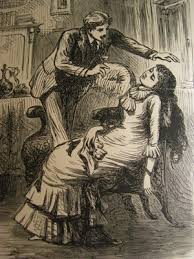
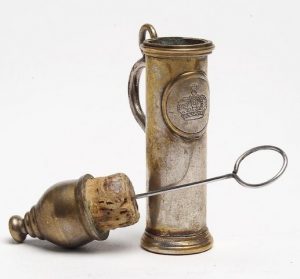
 Morning comes early for me. Once a night owl, I’m now one of the earliest risers of my acquaintance. I have the advantage of setting an alarm clock for 4:30 in the morning and hitting the snooze button several times if I’m not quite ready to greet the day.
Morning comes early for me. Once a night owl, I’m now one of the earliest risers of my acquaintance. I have the advantage of setting an alarm clock for 4:30 in the morning and hitting the snooze button several times if I’m not quite ready to greet the day.